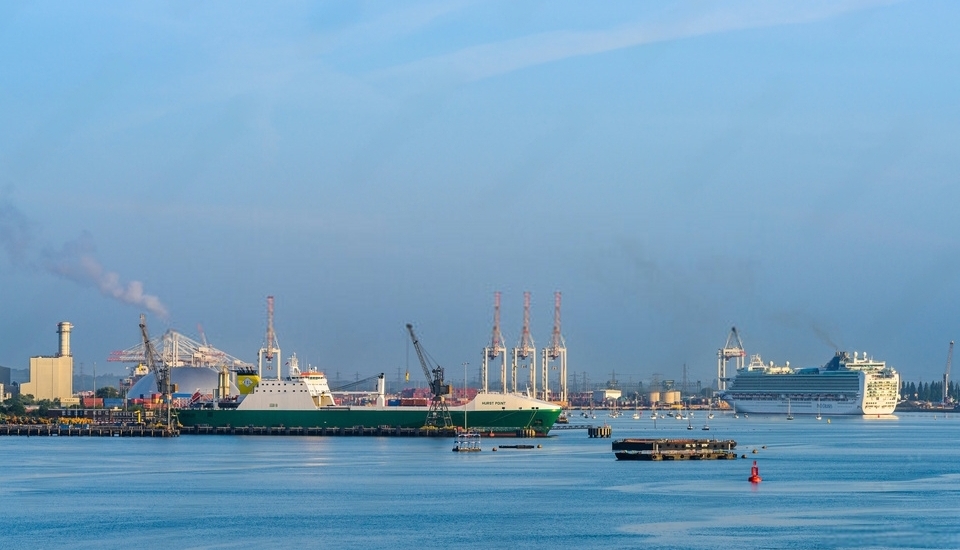Cross-docking is a logistics strategy that facilitates unloading goods from incoming trucks or containers and immediately loading them onto outbound trucks or containers with little or no storage time in between. The primary goal of cross-docking is to streamline the supply chain and reduce inventory holding costs. It plays an important role in supply chain management.
In a traditional warehousing model, goods are received, stored, and then picked and packed before being shipped to their destination. However, in a cross-dock process, the goods bypass the storage phase and move directly from the receiving dock to the outbound dock for immediate shipment. This approach minimizes the time and resources required for storage and order fulfillment.
Cross docking offers several benefits, including:
1. Increase efficiency: By eliminating storage and pick-and-pack operations, cross dock operations reduces handling and processing times, leading to faster order fulfillment and improved overall efficiency.
2. Decreased inventory costs: Since goods spend less time in storage, companies can minimize inventory holding costs, such as warehousing fees, labor, insurance, and the risk of inventory obsolescence or damage.

3. Rapid order cycle times: It enables quicker order processing and delivery, helping businesses meet customer demands for shorter lead times and faster delivery speeds.
4 . Cost efficient: Streamlined operations, reduced inventory, and improved supply chain responsiveness can result in cost savings for companies involved in cross stocking.
5. Enhanced supply chain swiftness: By facilitating rapid movement of goods, cross stocking improves supply chain flexibility, allowing companies to respond quickly to market demands, seasonal fluctuations, or unexpected changes in customer preferences.
Cross-docking is commonly used in industries with fast-moving consumer goods, perishable items, time-sensitive products, or where just-in-time (JIT) inventory management is crucial. Retailers, distributors and manufacturers often employ cross dock system to improve their supply chain efficiency and maintain a competitive edge.
It’s worth noting that cross-dock distribution needs efficient coordination among suppliers, carriers and logistics partners to ensure smooth and seamless transitions between inbound and outbound shipments. Advanced logistics technology and real-time data tracking systems are often employed to monitor and manage the cross-stocking process effectively.
Different types of cross-docking:-
1. Consolidation Cross-Docking: It involves receiving products from multiple suppliers or manufacturing plants and consolidating them into a single shipment for outbound distribution. It allows for efficient coordination of inventory and reduces transportation costs.
2. Deconsolidation Cross-Docking: It is reverse of consolidation. It involves breaking down incoming shipments from a single source, such as a distribution center or manufacturing plant, and sorting them for outbound transportation to different destinations. This strategy is useful when goods need to be distributed to various locations or retailers.
3. Opportunistic Cross-Docking: Opportunistic cross-docking occurs when there is an immediate need for certain products or goods. It involves quickly matching incoming shipments with outgoing orders based on real-time demand. This type of cross- docking is often used for time-sensitive or perishable goods to expedite their delivery and reduce storage costs.
4. Transportation Cross-Docking: It is primarily focused on transferring goods from one transportation vehicle to another without storage or handling. For example, products arriving at a hub or transshipment point may be unloaded from one truck and loaded onto another truck for further transportation to a different destination.
5. Manufacturing Cross-Docking: Manufacturing cross-docking involves receiving raw materials or components from suppliers and quickly transferring them to production lines for immediate use. It eliminates the need for storage and expedites the production process, reducing inventory holding costs and improving efficiency.
6. Retail Cross-Docking: Retail cross-docking is commonly used in the retail industry, where products are received at a distribution centre or warehouse and immediately sorted for individual stores. The goods bypass storage and are loaded directly onto outbound trucks, improving speed-to-market and minimizing handling and storage costs.
Each type of cross-docking has its own specific requirements and benefits but all share the common goal of minimizing storage and handling while enhancing the speed and efficiency of the supply chain.

